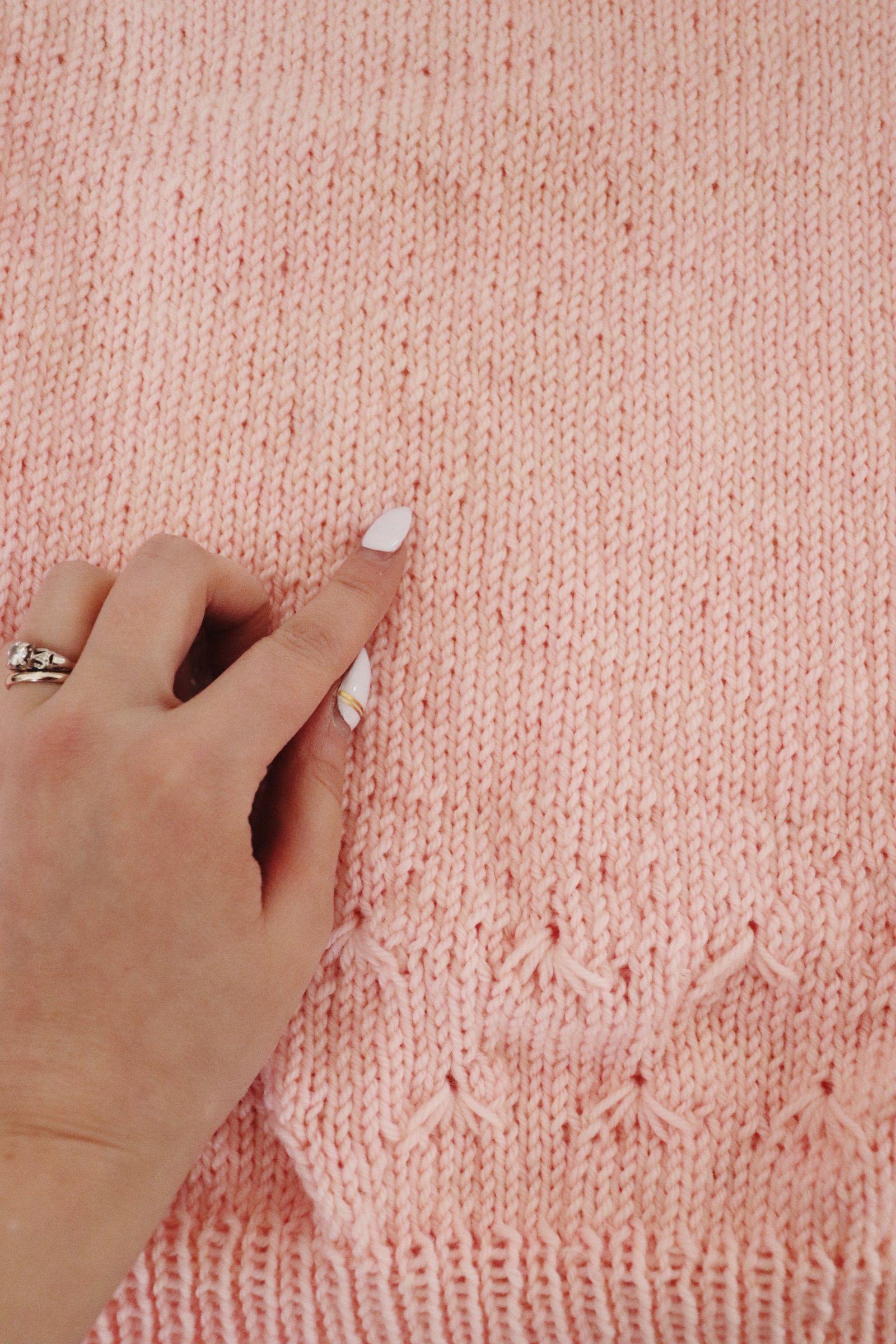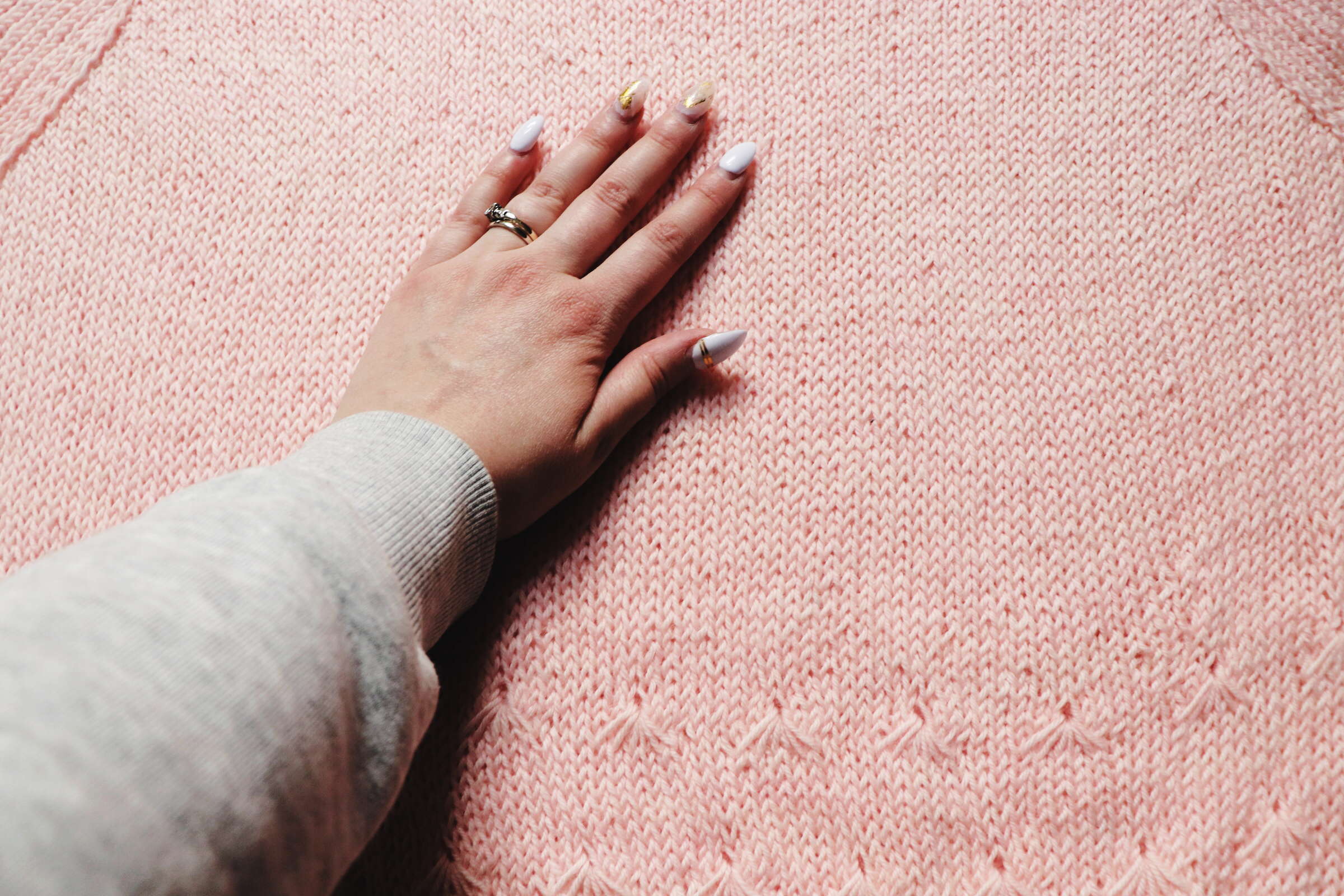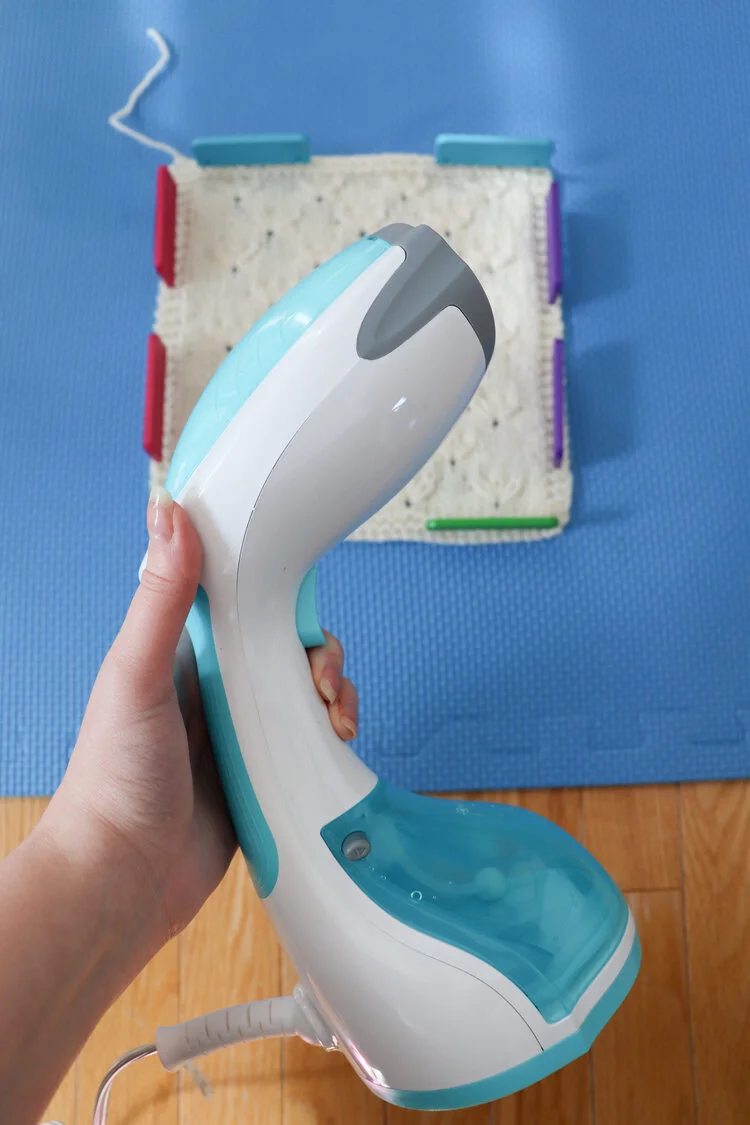BLOCKING YOUR KNITS
Pin this post to read later!
It wasn’t until I was sitting at a knit night, that I first heard about “blocking” knitwear. It randomly came into the conversation, and was like “What is that?”
The answer? Blocking your knitwear is like hairspray for your knits. It’s the final step that you take to keep your finished project in it’s perfect place. Blocking not only sets your piece, but it gives the stitches their maximum potential to shine. There are 3 main different ways to block, and each method is up to the knitter or crocheters preference. You have wet blocking (immersion), steam blocking, and mist blocking. All of these include the common denominator of WATER.
Ways to Block:
WET BLOCK: Immerse your knit in tepid soapy water (I suggest with a no rinse soap like Eucalan. Try the grapefruit smell. It’s super yummy and you don’t have to rinse it out) and let it soak for 20ish minutes. Take the piece out and carefully press out the water, making sure to not agitate the wool/fibre or it will felt! Roll it up in a towel, step on it to get more water out, place flat on blocking mats (I use kiddie mats because they are cheaper), pin in place. Let er’ dry! Note: You want tepid water and to limit the amount you touch your piece. Hot water and rubbing will agitate the fibres and they will felt together. You do not want this!
You’ll need: Water, Wool wash, blocking mats, T-pins or Knit blockers.
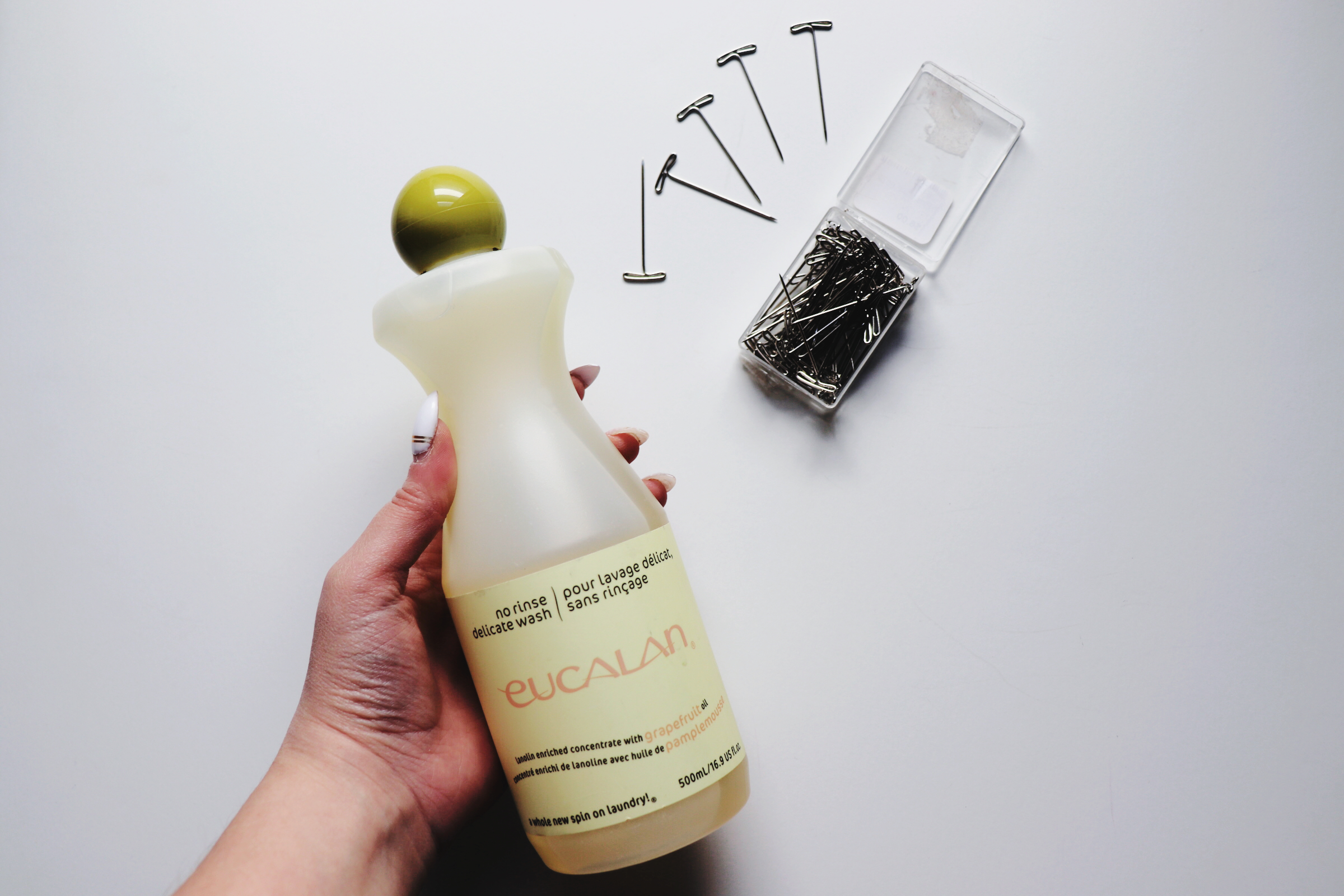
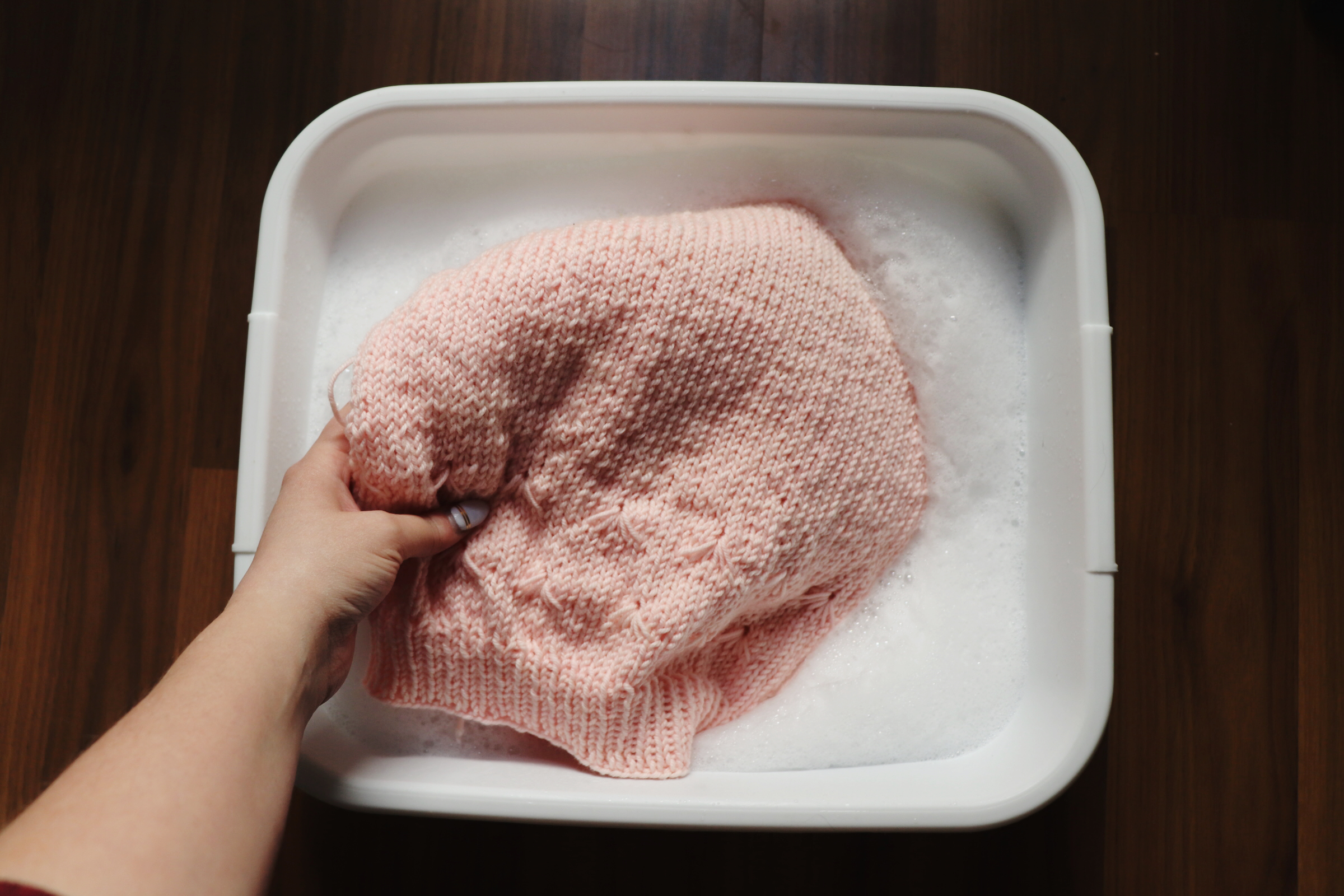

STEAM BLOCK: Lay your knit out on a flat surface (like a bed or towel or on blocking mats), pin your item into the place/shape/dimensions you want and turn your iron or steamer to the wool setting. Hold the iron/steamer around 1.5-3 inches above your piece and steam the item. Run your hands over the steamed stitches to smooth them out. Let dry. You can also wet a cloth, place it on the item, and press the iron into it. (Note that heat will MELT acrylic or fibers that have an acrylic blend, so be careful).
You will need: Water, T-Pin or knit blockers, blocking mats, a hand held steamer or iron.
MIST BLOCK: Lay your knit out on a flat surface. Pin into place/shape/dimensions you want. Mist your item with a spray bottle until slightly but no overly damp. Run your hands over the stitches to smooth them out. Let dry.
You will need: Water, T-Pins or knit blockers, blocking mats, spray bottle.
So why block?
Blocking evens out tension: When you knit, your tension will change ever so slightly throughout your project. This could totally depend on how stressed out you were that day, if you switched from a larger needle project to a smaller, or just a ton of different factors. If you hold up your whole piece, you’ll be able to tell in sections where your tension slightly changed, as certain stitches warp and look bigger or smaller than the other. Blocking smooths out those stitches and lets them all lie flat and even.
Blocking “re-knits” your wool: When we get wool, depending on if it comes in a ball, hank, skein etc, it’s wrapped and twisted in ways that will naturally curl or kink the fibre due to the fact on how long it stays in that position. By blocking (wet blocking especially), it allows the wool to “un-kink” and in a way re-knit itself as it dries. This again leave those stitches with a smoother and more orderly look.
Blocking pulls to “maximum” stitch potential: A lot of beautiful lace work when knit doesn’t showcase its shape/design well until it’s blocked, mainly due to the point above. By pulling the stitches to their maximum potential, they can showcase the design that was originally intended. Note: You can’t really block anything to make it SMALLER so be aware of this before you start tugging!
You’re going to wash it anyway: You’re going to have to clean your piece at some point, so you’ll want to block it anyways to ensure it stays in the original size you want instead of stretching with use. If you’re wet blocking with wool wash, not only does it clean the garment from the oils and residues from your hands as you knit or crochet, but it showcases the true dimension of the piece. Better to block and lock that original size in right away, instead of letting it grow with gravity and wear and then having to block it at that larger size later.
Though it is that final step (like weaving in ends) that we dread, blocking is totally worth it. Even a steam block will make your piece look that much more polished and finished. Not convinced: take a look at some of these photos below of blocked and unblocked pieces. Trust me, it’s worth it!
